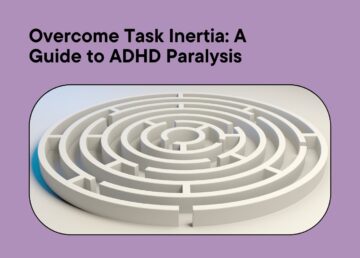
Caring for your mental health is crucial to a happy, fulfilling life. However, the task can seem daunting when you don’t know where to start. That’s why having and following a mental health plan that focuses on your personal issues and helps you progress can be highly effective.
The Centers for Disease Control and Prevention (CDC) reports that roughly 50% of Americans will be diagnosed with a mental health condition at some point in their life. The numbers are scary, but they highlight the importance of mental well-being.
While there is no one-size-fits-all approach to better mental health, a few strategies can be helpful while creating a deliberate mental health plan and working toward improvement.
1 – Identify Your Concerns
Reasons for having mental health issues are personal to each individual, but knowing your troubles can benefit your journey – highlighting the core issue sets the goal for the whole mental health plan.
Here are some areas that can be of concern to you:
- Stress and anxiety
- Low self-esteem
- Procrastination
- Chronic exhaustion and fatigue
- Symptoms of a mental health condition, such as ADHD
- Social anxiety and relationships
- Burnout
It can be hard to dissect your feelings, explore triggers and emotional reactions, and find the underlying issue, but moving forward is crucial.
2 – Set Achievable Goals
The goal-setting time comes when you’re sure about what mental health issues you want to resolve or improve.
Specific and achievable goals allow you to focus on taking deliberate, calculated steps toward the end goal. For example, if you aim to manage your ADHD symptoms better, you can set several achievable goals, such as:
- Identify which symptoms you’ll be working on
- Do research on your symptoms to understand them better
- Start practicing mindfulness techniques for 10 minutes a day, 3 times a week
- Start journaling about your feelings and progress every evening
- Implement cognitive behavioral therapy (CBT) exercises in your daily routine
You can be as creative as you want with your goals, but they should align with what you want to achieve in the long run.
3 – Find Resources and Design a Mental Health Plan
While no one else except you can improve your mental health, having additional help and resources can tremendously affect your progress.
Resources like a good support group, a mental health app, practicing self-care and mindfulness, or even therapy can be highly beneficial. Making them a part of your mental health plan can help you stay consistent, prevent setbacks or make it easier to get back on track.
Pick the resources you think are most suitable for you – download an app like Sensa or schedule appointments with a therapist, and consider how they fit into your schedule.
Don’t be afraid to add them to your schedule and to-do lists – working on yourself is a massive task and deserves the right amount of attention.
4 – Track Your Progress
Taking the first step is always the hardest, but not seeing immediate results after you work hard can also be disheartening. It’s crucial to track your progress to avoid feeling like you’re not improving.
Whether you started to acknowledge your unhealthy coping behaviors or stopped engaging in them altogether – any milestone should be celebrated as it shows that you’re evolving into a new, improved version of yourself.
Journaling, mood tracking, and meditation are excellent ways to reflect on your actions and progress.
It Takes More Than a Mental Health Plan
While a mental health plan with goals can assist with having action points toward improved mental well-being, dedication and hard work still matter the most.
Improving your mental health is a journey – it may take time to see results. It’s essential to be patient and kind to yourself along the way and make changes that work for you.
Following a mental health plan like the one you can find in the Sensa app provides clarity and expectations, but what matters most is actually putting in the effort. Believe in yourself, and you’ll start noticing how your mood improves in no time.





